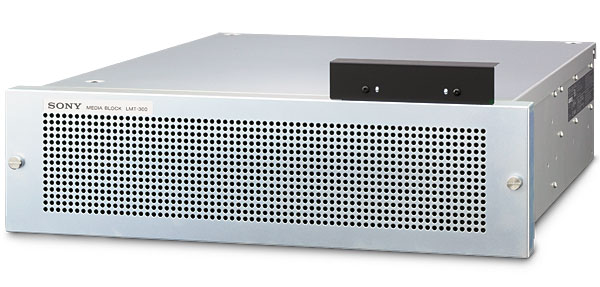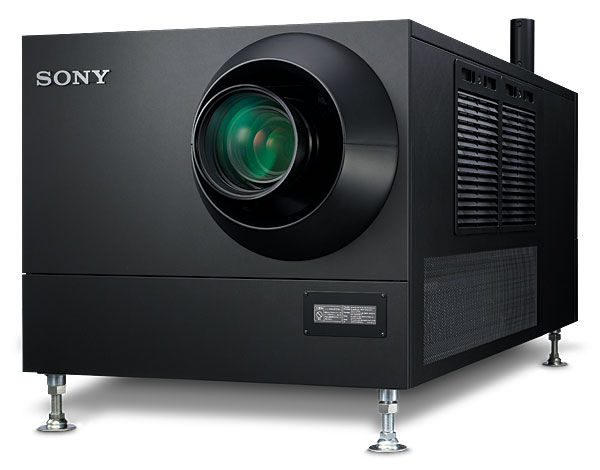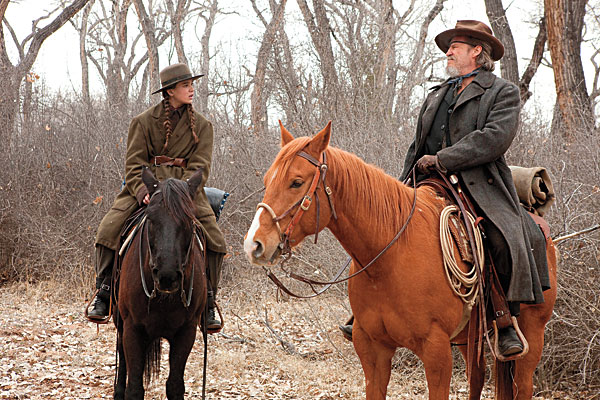Hollywood, The 4K Way Page 2

Even with a 4K display option in place and additional 2K entries from Sony competitors Christie, NEC, and others, digital projection initially got off to a slow start. The biggest impediment has always been cost. Even today, the projector and secure digital server that make up a typical system can run upwards of $80,000 if purchased outright. With the greatest economic benefit of digital projection—the elimination of film prints—accruing to the studios, exhibitors remained reluctant to invest in new, complex technology that costs nearly three times the per-screen price of a traditional film projector.

The solution? Hollywood’s version of lease-to-own. The major studios in DCI Initiative, LLC, created an industry-wide digital print fee program that pays for the equipment over time as it gets used. Typically, the projector and server are purchased by a third-party integrator or installed by the manufacturer acting as an integrator. The exhibitors purchase the system at a highly discounted rate, and over a period of 10 years, each time a movie is displayed digitally on that system, the studio saving the money on what would otherwise be a costly film print pays a fee to the integrator to help pay back the cost of the equipment.
According to Johns, it’s been working. There are currently about 40,000 movie screens in the U.S., of which approximately 60 percent have been converted to digital, he says. At least 30 percent of those 24,000 digital screens, or about 8,000, represent Sony’s market share and are therefore 4K systems. (The majority of the remainder are likely 2K due to the lack of 4K competition that’s persisted until fairly recently.) Worldwide, nearly 50 percent of screens are now said to be projected digitally.
Here in the U.S., the two largest theater chains—AMC and Regal—have embraced digital, and many midsize operations are now following suit. What’s accelerating the transition, Johns says, is that movie chains that have resisted till now are feeling pressure to make the leap while the studio print fee program remains in place. The studios—ever anxious to say goodbye to prints—have incentivized the movie houses with the equivalent of a late-night TV Ginsu-knife pitch. “It’s a limited-time offer, so everybody only has a certain amount of time to roll these things out and have that paid for over a longer period of time,” says Johns. “Initiating those deals will end in the next year, year and a half, so everyone is motivated to do it now. They realize if they want the studio support, they need to move quickly to do a deal and get the transition done.” (Sony’s Facebook page, facebook.com/sonyelectronics, keeps an updated page that now lists 20 theater chains featuring 4K projection.)
The 4K Workflow
Johns and others believe a steady stream of 4K digital movie releases will further drive acceptance of 4K projection. But as 4K image capture stands to become more prevalent, thanks to the new cameras, Hollywood is also embracing 4K for the purpose of archiving, restoring, and releasing movies originated on film. About 70 titles have now been brought all the way through the post-production chain in 4K for projection in 2K- and 4K-equipped digital theaters. Recent 4K releases include last year’s Inception, Moneyball, and the just released The Girl With the Dragon Tattoo (which was also shot in 4K).

What’s made this possible is the development of tools that allow full post-production in the 4K domain. Movies are first shot in 4K or scanned into digital from their film negatives at 4K. The edited movie then exists as data in what’s called a digital intermediary. In the case of new movies, color correction and other adjustments are applied, and the finalized digital data is downloaded to a digital printer that generates a master photographic negative used to create film prints for broad distribution or archiving. If the movie is also slugged for digital release, the data will be compressed and put into an encrypted digital cinema package, or DCP, that will be distributed to theaters, typically on encrypted hard drives. The compression technology used, called JPEG2000, allows either a 2K or 4K data stream to be pulled from the same package, which simplifies distribution across all theaters.
For the Blu-ray or theatrical re-release of older classic titles, there’s a similar but more rigorous restoration process that includes cleaning the original negatives in an ultrasonic bath prior to scanning, and more critically, a frameby-frame examination of the movie to digitally eliminate artifacts, dirt, scratches, and other aberrations that detract from image quality.
At Sony Pictures Entertainment, the responsibility for film restorations falls to Grover Crisp, executive VP of asset management, restoration, and digital mastering. After meeting him and seeing what he does, I’m convinced he has the coolest job in Hollywood. When we visited Colorworks, Crisp and his team showed us images from several movies either recently restored or now in progress, including Monty Python and the Holy Grail, Guns of Navarone, and the great epic Lawrence of Arabia.
The value of 4K was immediately apparent the minute we compared a still frame of Anthony Quinn taken from the original 2K scan for Navarone with its 4K equivalent on a 20-foot-wide screen. The amount of additional sharpness in the 4K elicited gasps. Fine details like the ribbing in the fabric of his gray vest, the pills in the wool, and the stubble on his face went from looking soft and smeared to having sharp dimensionality and a commensurate heightening of apparent contrast.
Lawrence of Arabia, which had been scanned in at 8K resolution (to ensure the highest capture of detail from the film’s large-format 65mm negative) and then taken down to 4K for the workflow, was even more revealing. A close-up of Peter O’Toole’s face jumped off the screen compared with the earlier 2K master, thanks to the more detailed texture of his skin and the sharper reproduction of the layer of dust partially coating his face. A longer shot from Lawrence that was also taken in the desert showed a series of fine concentric lines near the top of the frame in a pattern reminiscent of a fingerprint. These, Crisp explained, are cracks in the film emulsion caused by its melting in the desert heat and then healing over. The lines have always been there in the negative and result in an unusual rippling artifact when viewing the movie, but until now there hasn’t been a way to fix it. “We’ve never been able to see this kind of detail before—it’s always been kind of submerged,” he says. “But now, with this 8K scan, it’s more obvious.” Sony commissioned a third party to develop software to minimize or eliminate this distracting artifact for the restored version, which is due out on Blu-ray and in theaters later this year.

Just as noteworthy for Home Theater readers was the improvement we saw in 2K downconversions taken from fresh 4K scans—as viewed on a regular high-definition 2K flat-panel monitor akin to what any of us might have at home. Examination of a frame from the classic “Bring out your dead” scene in Holy Grail showed all kinds of enhanced detail, including leaves floating around in the air that are otherwise lost and additional sharpness in clothing and faces. “This movie was shot kind of soft, kind of low budget, and we try to preserve that [in the restoration],” Crisp explains. “But the previous [2K] workflows didn’t bring out what was really there. The resolving power of the scanners and lenses when the older HDs were done just wasn’t there.”
A direct 2K/4K scan comparison of a scene from The Odessa File on a 1920 x 1080 HD monitor was equally revealing. One close-up of a military officer showed gobs of additional fine detail in his beard that were simply washed out in the earlier 2K scan. Bottom line: New Blu-ray releases will continue to benefit from Hollywood’s migration to 4K masters, even as we await a native 4K delivery system to the home. “Whether you work at 2K or 4K to do the clean-up and the color correction, we discovered that the biggest difference is in the original scan, because that is what captures your information,” Crisp explains. “So even though you downrez to 2K for some projects, having started out with that oversampled image to begin with, you just inherently have more detail in the final product.”
To Infinity...and Beyond
So let’s see. We’ve got more movies being shot in 4K; more being digitally mastered, restored, and distributed in 4K; and more 4K digital screens going into local cinemas. More 4K in theaters means more exposure and awareness of 4K among consumers. That, along with the stockpiling of more native 4K content, should create more demand for 4K consumer displays—which make our existing 2K content look better—and helps pave the way for a native 4K delivery system for the home. In the meantime, we’re getting better 2K Blu-rays made from 4K scans that we can play right now. OK, I get that all this will take some time to gel. But for the home theaterphile, I can’t say I see much downside.
In the end, though, 4K isn’t really about us—we’re just along for the ride. In the grand scheme, 4K is really about getting us closer to the treasures in our great cinematic canon and allowing us to see movies as the creator intended, unfettered by the lost detail and distortions attributable to the photographic and even digital systems used to capture and display images in the past. It’s been more than a decade since the birth of digital cinema, but in my view, 4K may have finally pulled up the curtain on film’s last act. How long it will last now is anyone’s guess. But I saw the truth projected right in front of me, plain as day. Eventually, I bet you’ll get to see it too.
For a listing of all movies released digitally in 4K, visit pro.sony and search “4K Movies.”





























































